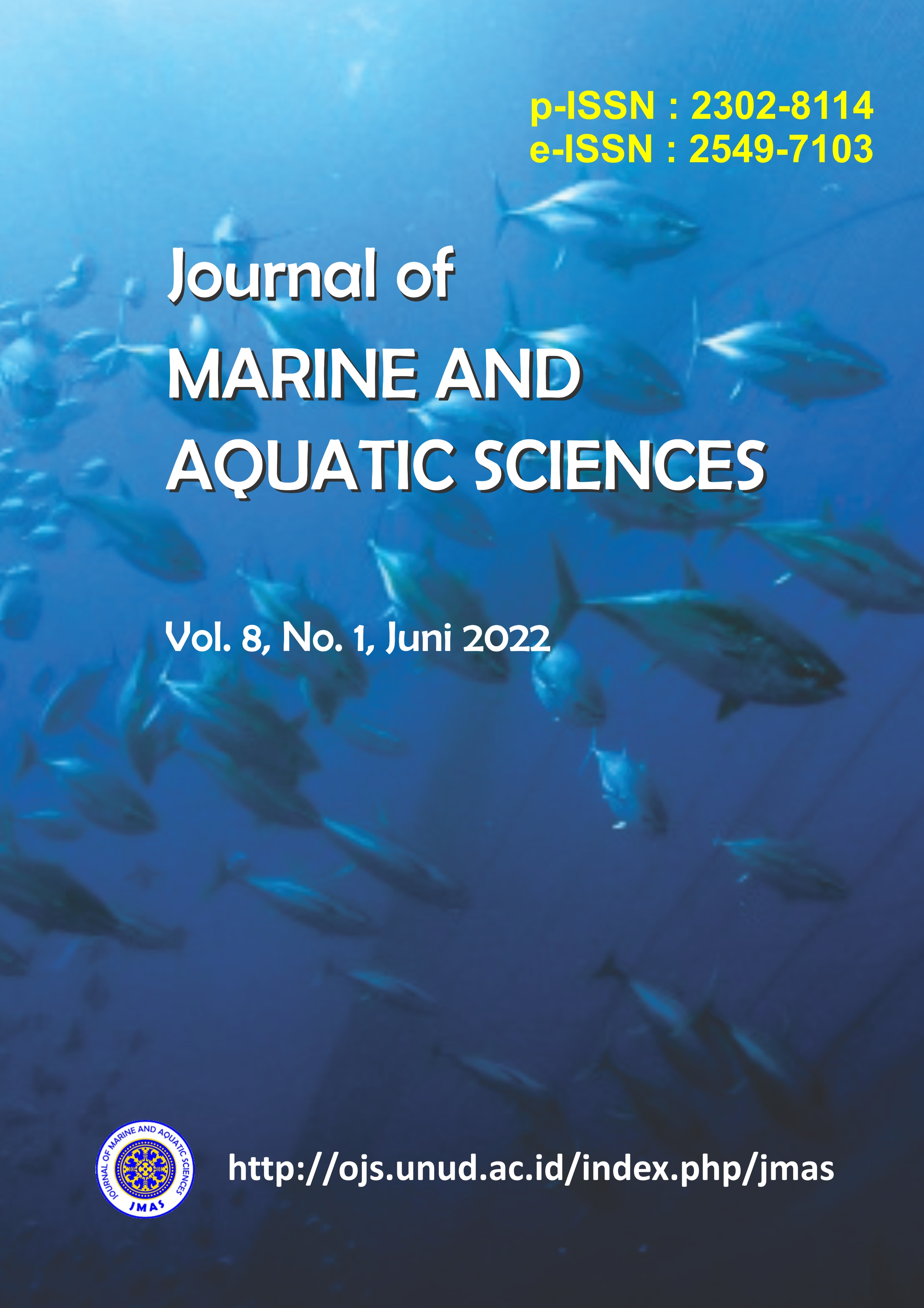Penggunaan Metode Rolling Mosaic Untuk Mendukung Pengembangan Peta Prakiraan Daerah Penangkapan Ikan Wilayah Pesisir
Abstract
Predicted fishing ground maps (PPDPI) which made using satellite image data is often constrained by clouds, causing its production not too optimal. Rolling mosaic methods examined here is expected to reduce cloud cover so the information about oceanographic conditions can be more visible and can increasing PPDPI production. In July, the percentage of sea surface temperature data can increase from 15.3%-30.29% using 1-day mosaic data, to 40.46%-56.75% using 3-day mosaic, it increases to 72.24%-77.88% using 7-day mosaic data and increase to 84.19%-89.07% using 14-day mosaic. While the percentage of sea surface temperature data in December can be increased from around 4.93%-13.03% to 41.48%- 51.60%. In general, at July and December, the relationship between 1-day mosaic and 3-days mosaic data, 7-days and 14-days are very strong, but the strength of the relationship will decrease (the correlation coefficient gets smaller) along with the increasing of the time range used to mosaicking the data. The RMSE shows that the RMSE between the 1-day mosaic with 3-days mosaic is 0.288 (July), 0.263 (December); RMSE between 1-day mosaic and 7-days mosaic is 0.388 (July), 0.387 (December) and RMSE between 1-day mosaic and 14-days mosaic is 0.471 (July), 0.477 (December). This RMSE values shows that the longer time range used to construct the mosaic, the error value will also increase. Scoring analysis using percentage of data, correlation coefficient and RMSE as a parameters indicate that the 7-days mosaic method has the highest score so it is considered as the best method to be used to predict sea surface temperature with minimum cloud cover.
Downloads

This work is licensed under a Creative Commons Attribution 3.0 International License.
Copyright 2012 - 2023 Journal of Marine and Aquatic Sciences (JMAS)
Published by Fakultas Kelautan dan Perikanan Universitas Udayana, Denpasar, Bali, Indonesia
JMAS (p-ISSN 2302-8114; e-ISSN 2549-7103)


